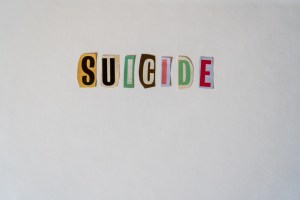By Mylika Scatliffe,
AFRO Women’s Health Writer,
mscatliffe@afro.com
Mental health professionals say it’s time to screen more effectively to identify those at risk of committing suicide.
According to the Centers for Disease Control and Prevention (CDC), suicide increased 30 percent between 2000 and 2018 in the U.S.
While declining in 2019 and 2020, the rates have soared African Americans locally.
“In Maryland, suicide rates during the first COVID lockdown went down among Whites, but doubled among Blacks,” said Dr. Paul Nestadt, a Johns Hopkins medical school psychiatry professor.
A growing number of mental health professionals say better therapy can reverse the bleak trend.
An August 2022 article published in the British medical journal, the Lancet, titled “Assessment of suicide risk in mental health practice: Shifting from prediction to therapeutic assessment, formulation, and risk management,” makes a case for a shift in identifying those at risk for and prevention of suicide.
The article suggests a need for more effective screening practices to pinpoint potential suicide victims.
In the United States, suicide prevention has typically focused on using standardized assessments. The Lancet article says traditional assessments are not accurate predictors of suicide risk.
“In the United States we traditionally use a form in the doctor’s office that asks about a patient’s mood. Various forms are used for the initial screening, but the one thing they have in common is that they all ask about suicidal thoughts. However, screeners are terrible predictors of risk,” said Nestadt.
Studies show that 90 percent of individuals who die by suicide have some type of mental health disorder. The Lancet article suggests that medical professionals in hospital settings often face pressure to document efforts at predicting risk in patient notes, including indicating if the patient is low, medium, or high risk.
Instead, the article concludes, mental health professionals should approach patients with a more holistic, person-centered manner. For Black people, this is crucial when considering culturally appropriate behavioral health treatment.
Black people have a long history of discrimination, systemic racism and trauma that should be considered when considering their risk for suicide.
According to the Suicide Prevention Resource Center, suicide rates among Black people peak during adolescence and young adulthood, then decline through age 85 and older.
The rates for Black men are more than three times the rate of Black women.
“Part of good risk assessment is determining what type of lives patients have outside the hospital setting and what type of support they might have once they are discharged. Do they live alone?” said Nestadt. “What’s going on in their lives? Are they being sent home alone to stare at four walls or is there someone there that can be watchful, help them, or reach out for help if needed.”
Most medical professionals in a hospital or doctor’s office don’t feel adequately trained in screening individuals for suicidal risk, which can lead to some anxiety when they are confronted with an at-risk patient.
“Clinicians might be anxious because they might confirm someone is at risk, and then have to worry about not being trained on how to help them. [They then] have to figure out the next step in getting the patient adequate and proper help. Do they go on a waitlist for months or do we send them to the emergency room?” said Nestadt. “Mental health professionals are trained of course, but the primary care or emergency room doctor may not be adequately trained at spotting someone at risk for suicide when they came in to the doctor’s office for something other than a psychiatric complaint– or [go] to the emergency room solely for a psychiatric complaint.”
A few studies have shown that patients don’t take issue with being asked if they have suicidal thoughts or about their moods, but they do mind standardized, scripted questions, finding them to be unhelpful and insincere.
Conversely patients reported that they are more likely to be open about their state of mind and trust a clinician who genuinely listens and validates their feelings while using a therapeutic approach.
There is the persistent– but fals idea– that asking patients about suicide will plant the suggestion and encourage them to try if, even if they had not previously considered doing so.
“That is absolutely a myth,” said Nestadt. “The only way to get answers is to ask. Doctors ask patients invasive, uncomfortable questions all the time – about their sex lives, about embarrassing bodily functions – it’s part of the job! We can ask about suicide.”
The Lancet article states “the clinician can achieve this rapport by taking time to set the scene, conveying concern and care, acknowledging the potential for uncomfortable questions, and using positive non-verbal communication, open questions, and active listening skills throughout the assessment to encourage the patient to tell their story.”
The article further explains how clinician interactions with patients should emphasize exploring the patient as a whole person – their hobbies, achievements, life experiences including financial difficulties, interpersonal conflicts, and problems with addiction, and how they have overcome these difficulties in the past, which can assist with identifying risk, treatment, and later on safety planning.
Safety planning is discussed as a collaborative effort between a clinician and patient to identify and plan for potential future suicidal crises. It establishes a human connection between the practitioner and patient and benefits the patient by drawing on their own problem-solving abilities, all while creating a sense of hope and validating the patient’s unique challenges.
Behavioral specialists say safety planning involves recognizing warning signs, identifying and employing coping strategies, connecting the patient with people or settings as a means of distraction, identifying and engaging social contacts for support, approaching professional contacts, and making the environment safe.
Nestadt firmly believes that suicide should be treated as a public health problem, which means treating the population as a whole.
“We treated smoking as a public health problem and made it harder to smoke in public places among other solutions. When there were so many fatal traffic accidents, we mandated seat belts, air bags, and car seats for babies. We could treat suicide the same way,” said Nestadt.
These shifts in how smoking and traffic accidents were approached resulted in dramatic reductions in illnesses and fatalities.
An additional major component is the patient’s access to lethal means needed to carry out a suicide.
In the United Kingdom, the shift from coal gas to natural gas ovens was linked to a dramatic drop in suicides. Once coal gas ovens were no longer available it became harder for citizens to commit suicide by exposing themselves to carbon monoxide.without carbon monoxide being readily and easily available.
When the sale of more than 16 paracetamol tablets–the equivalent of tylenol in the United States–were mandated to be sold in blister packs, suicide by overdose of paracetamol dropped dramatically.
“If harder to do, people might stop and think about it, and not do it,” said Nestadt.
In the United States, 62 percent of gun deaths are due to suicide, even more than homicide, and guns are easier to get.
“White men historically have used guns in over 60 to 75 percent of suicides. The number of Black men that own guns are increasing, meaning they often have guns easily available to them.
The overwhelming majority of suicide attempts and deaths by Black men are by using a gun.
The traditional ways of screening for suicide have shown that those individuals found to be at high risk had lower rates of actually dying by suicide, while those determined to be low risk, often completed the act of suicide within days of being assessed, further evidence that standardized screening tests are poor predictors of risk, the Johns Hopkins psychiatrist said, noting warning signs are not necessarily consistent, and the decision to commit suicide is often an impulsive one.
Nestadt noted how the increase in suicides among young Black men is concerning, and how Johns Hopkins University has shifted intervention efforts toward the young Black male population.
“Young Black men have been understudied in the past for various reasons – racism, and previously not being a group that was usually dying by suicide.
We’re now looking for better ways to reach Black men,” said Nestadt.
Help us Continue to tell OUR Story and join the AFRO family as a member –subscribers are now members! Join here!
The post Mental health professionals suggest more effective approach to stemming suicide appeared first on AFRO American Newspapers .











